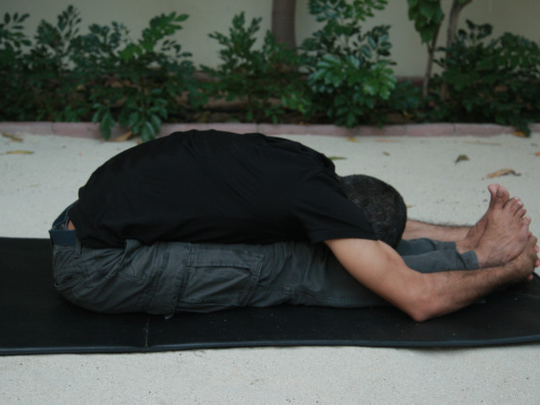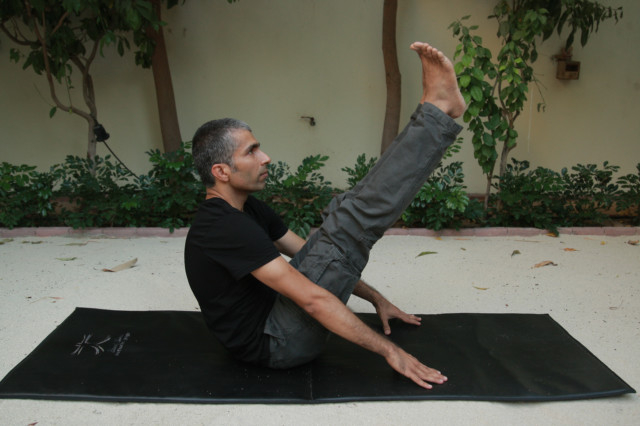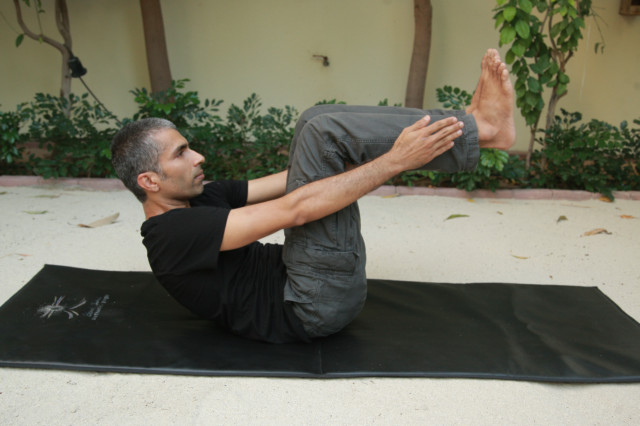
There are more than enough fitness experts and novel abdominal workouts that on a daily basis claim abdominal shrinkage. Yet it’s a fact that abdominal circumferences have a way of defying shrinking attempts, growing beyond acceptable limits with little hope of reversing this expansion. The typical crunching to pare the stomach is no long cutting ice with researchers. They are looking at the whole phenomenon of subcutaneous fat surrounding the abdomen with new eyes.
WHAT LIES BEHIND FAT STORES
The hormone cortisol and its ill-effects have changed the game. Stress in the body causes cortisol levels to peak and this in turn leads to lean muscle breakdown and the accumulation of fat in the abdominal region. In such a scenario, the clear direction is that abdominal and subcutaneous fat reduction needs stress levels to stay down. This discovery has led the world to seek solutions from yoga.
WHY YOGA FOR RIDDING THE ABDOMINAL BULGE
There are three main stress busters: sleep, slow breath rate, and exercise with a liberal dose of relaxation work.
All the above are components of a yoga regime, so it is logical that the science of yoga should be expected to relief mankind from stress.
YOGA AND SLEEP
The quality of sleep improves with the practice of yoga because of increased blood circulation to the sleep centres in the brain. Yoga also refreshes you at the cellular level so that for every one minute of yoga, one minute less of sleep is required. More restful sleep induced with yoga leads to stress levels dropping.
YOGA AND BREATH RATE
The role of breathing is to aid the exchange of oxygen and carbon dioxide, taking in the former and expelling the latter from the lungs. The diaphragm and intercostal muscles help the lung movement. But when stress hits a person, his breath becomes shallow and does not activate the diaphragm, and the exchange of gases is severely disrupted. Yoga teaches you to breathe slowly, evenly and gently, calming the nervous system, lowering blood pressure, lactic acid build up in muscles, improving energy levels and immune system and releasing stress and tension.
YOGA AND CORE FAT
The human body has about 29 core muscles and they lie in a belt surrounding the back, abdomen and pelvis. The health and strength of these muscles dictates abdominal and whole body stability. Studies have shown that abdominal crunches do not generate much muscle activity in this region, which is not to say that they don’t have their place in a good core targeting workout, but a lot more is needed.
Studies confirm that what works best on the abdominal spread and subcutaneous fat is exercise with intermittent rest periods. A yoga regime consists of a set of active postures followed by relaxation postures. This traditional science is interpreted variously by many but at its core it remains a very physically demanding system which also masters the art of relaxation, which penetrates to layers so deep that even the nervous system is not left unaffected. The over-stimulated fight-and-flight response of the sympathetic nervous system is soothed and balanced by the rest-and-digest response of the parasympathetic nervous system by a systematic practice of yoga postures.
Practice of the week:
Next week: Anatomy of the core
This is an interactive series, in which we will bring you practical tips on daily living, inspired by the vision of yoga. Write in to tabloid@gulfnews.com with your questions and doubts regarding enhancing your lifestyle through yoga. For more information, call 800-YOGA (9642) or log on to artisticyoga.com












